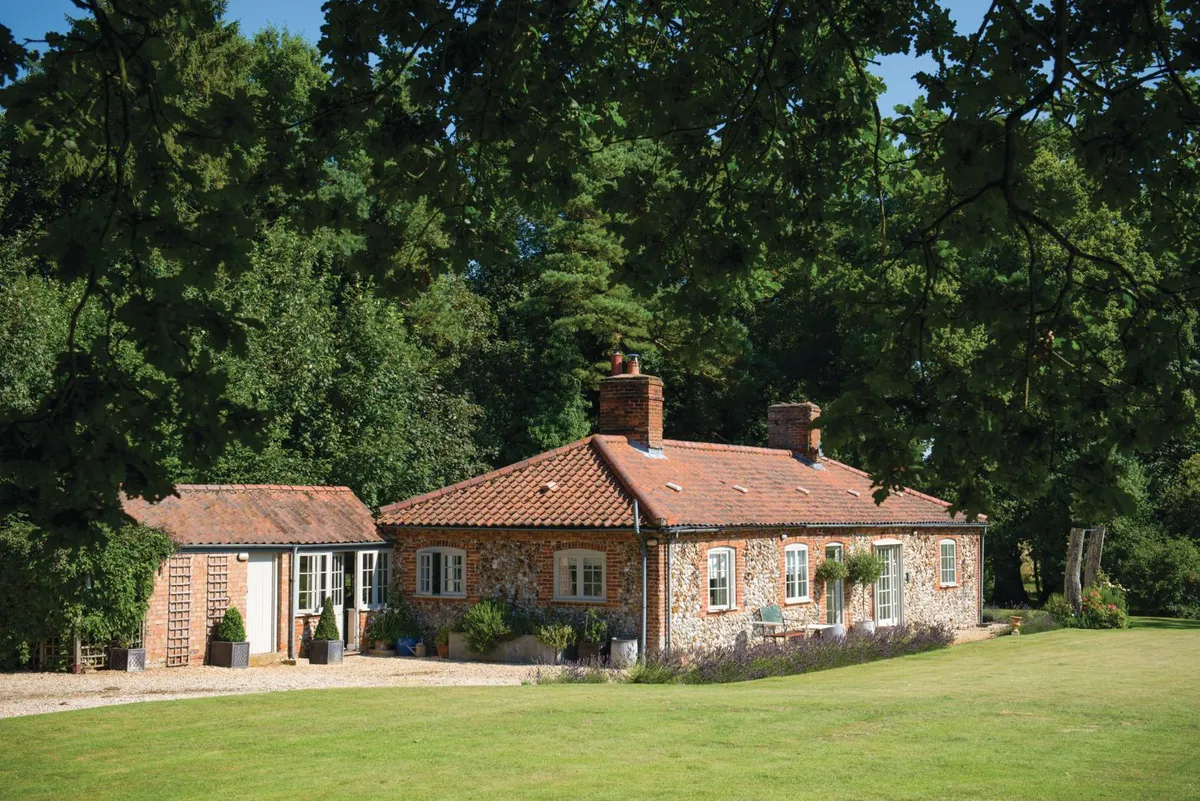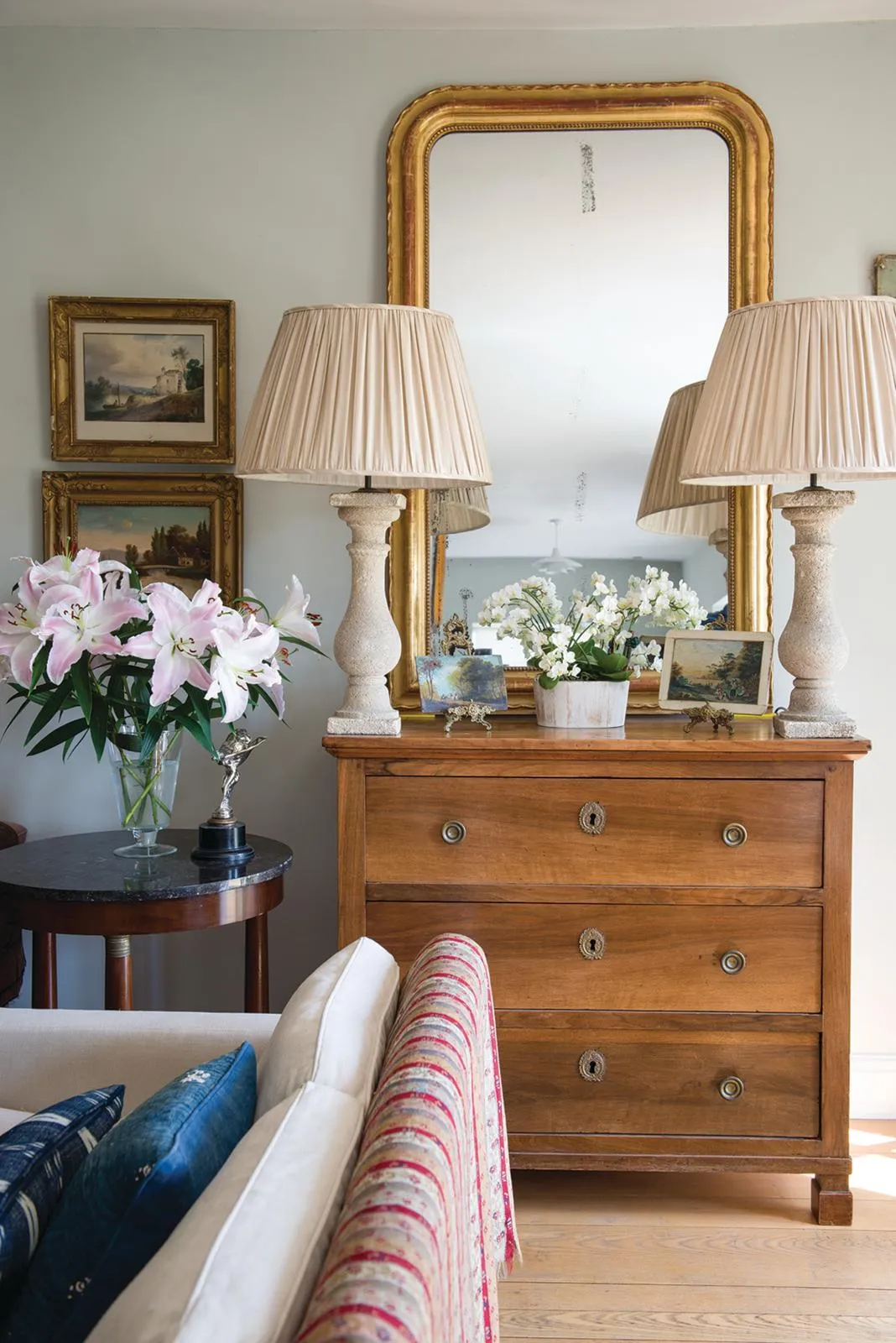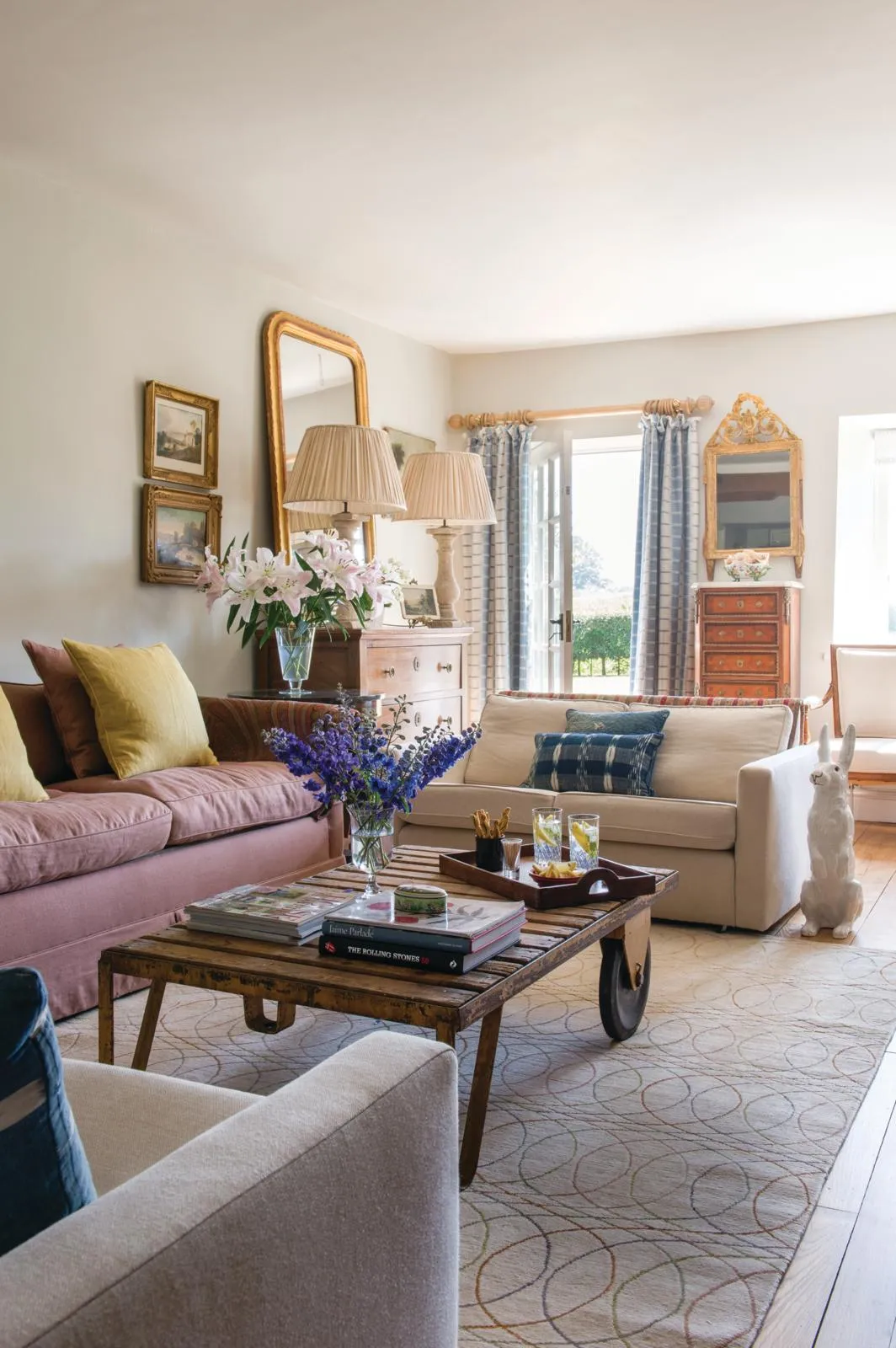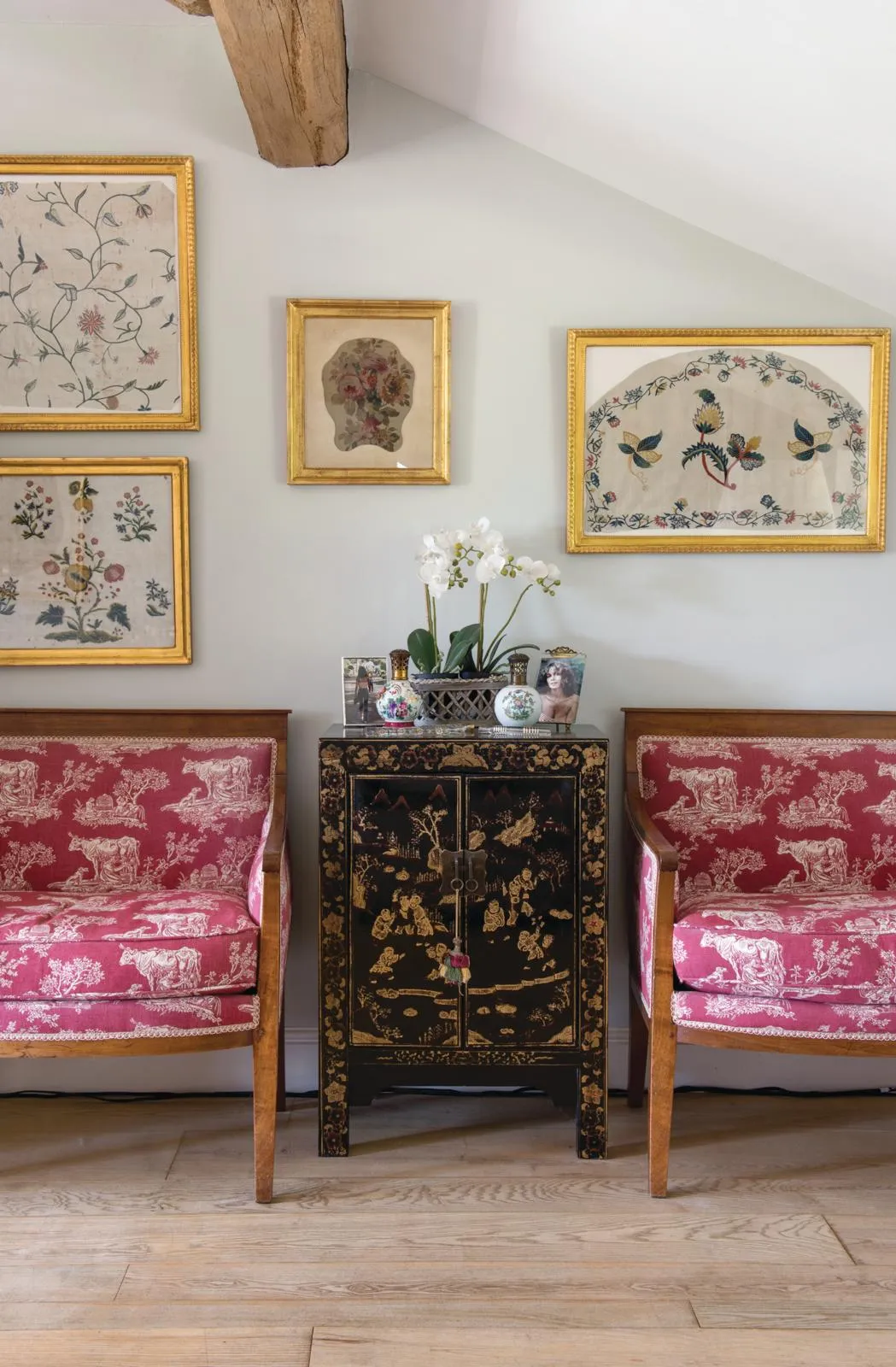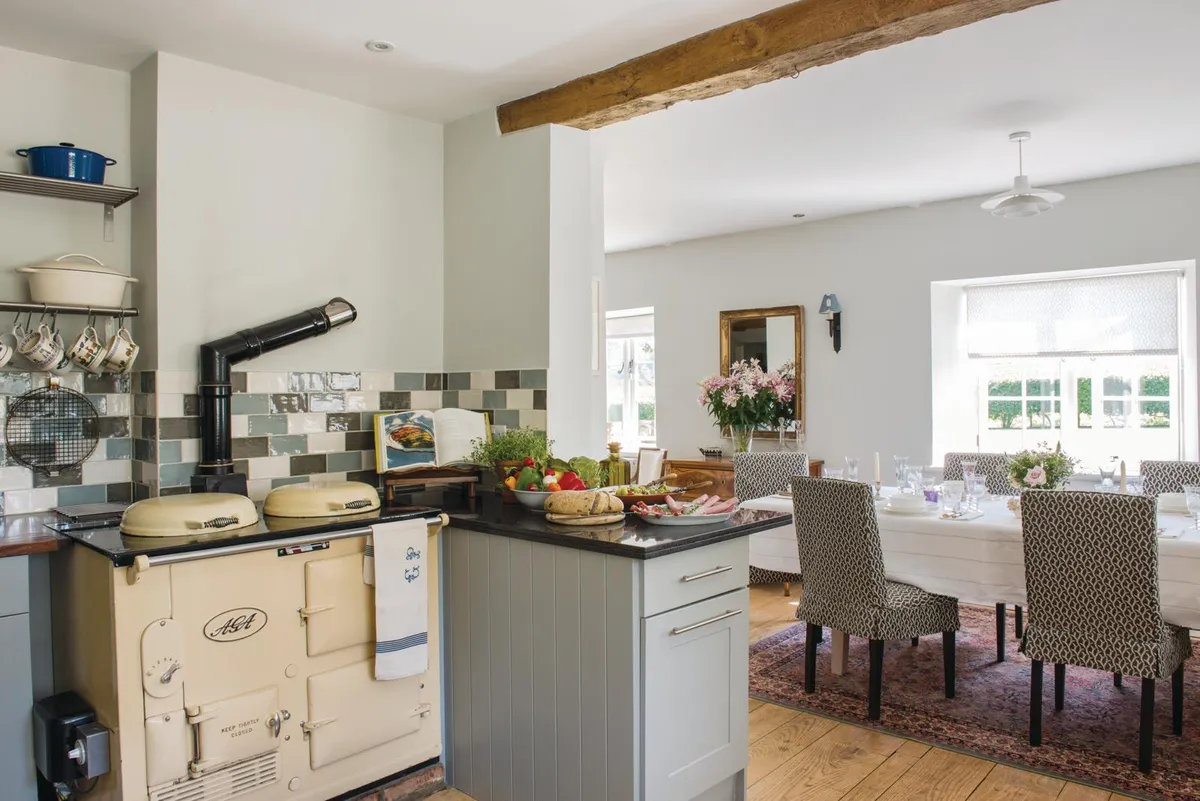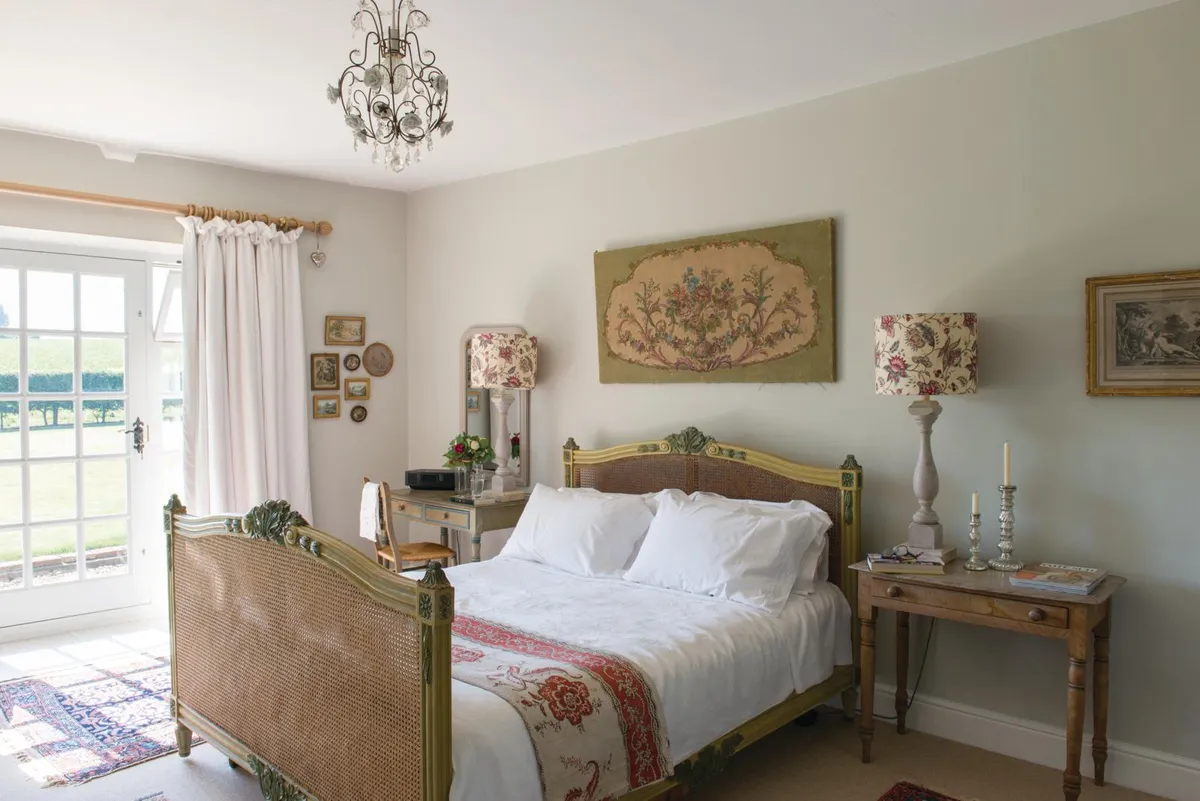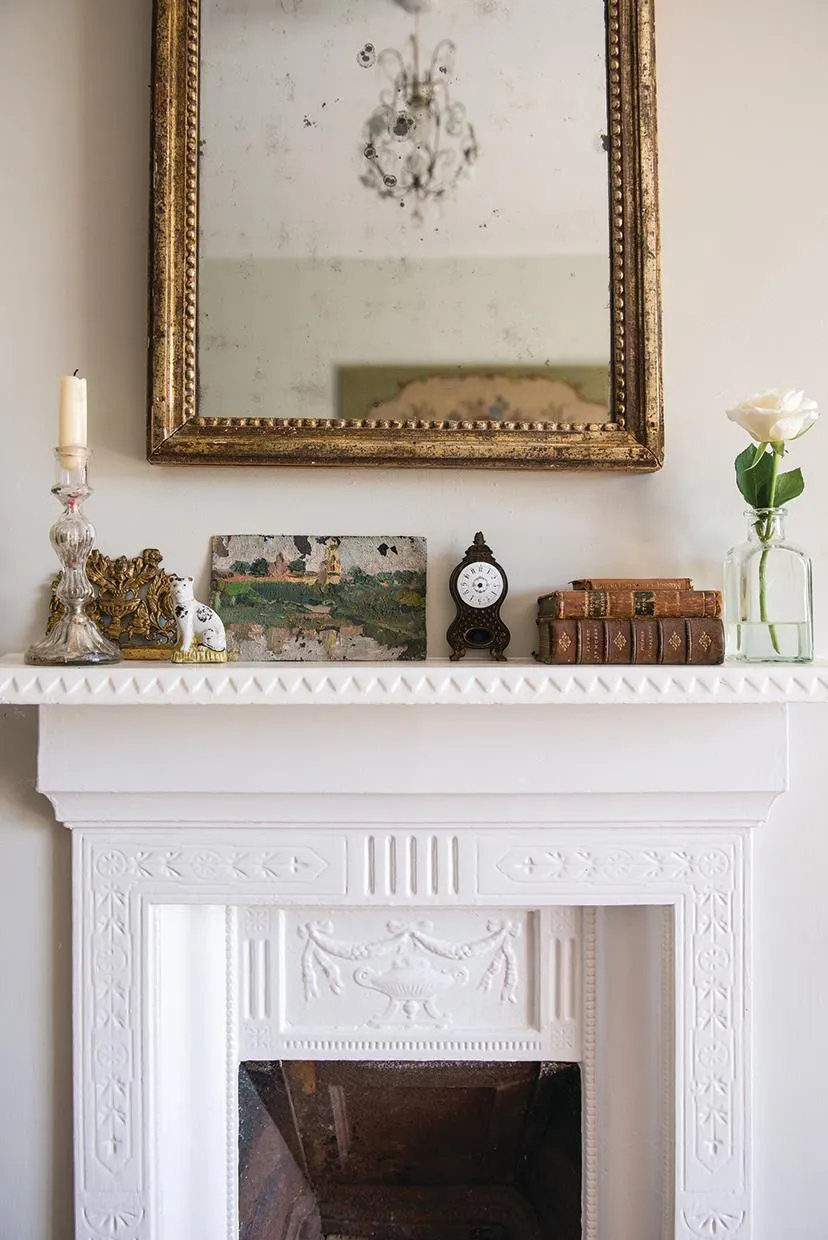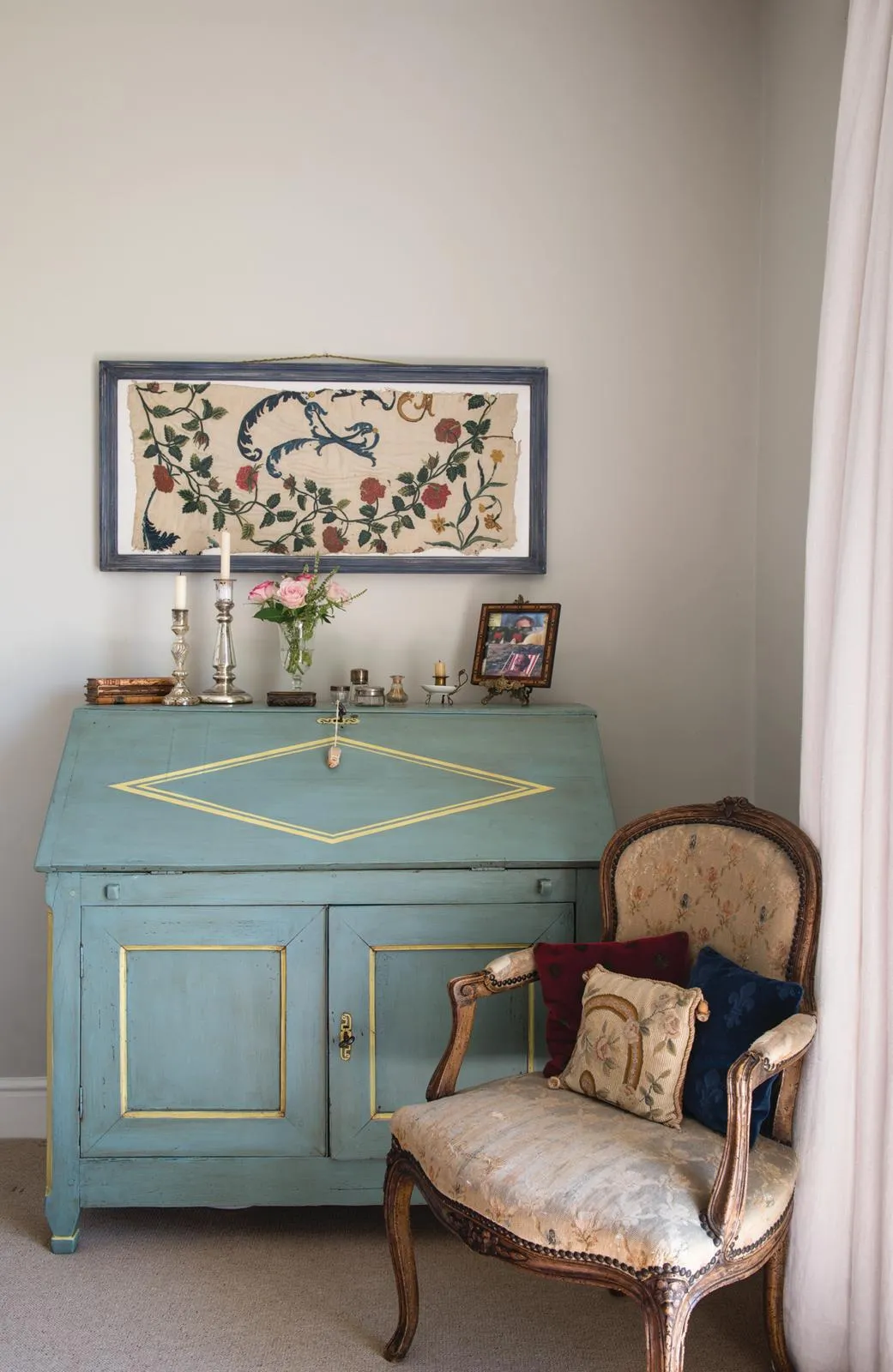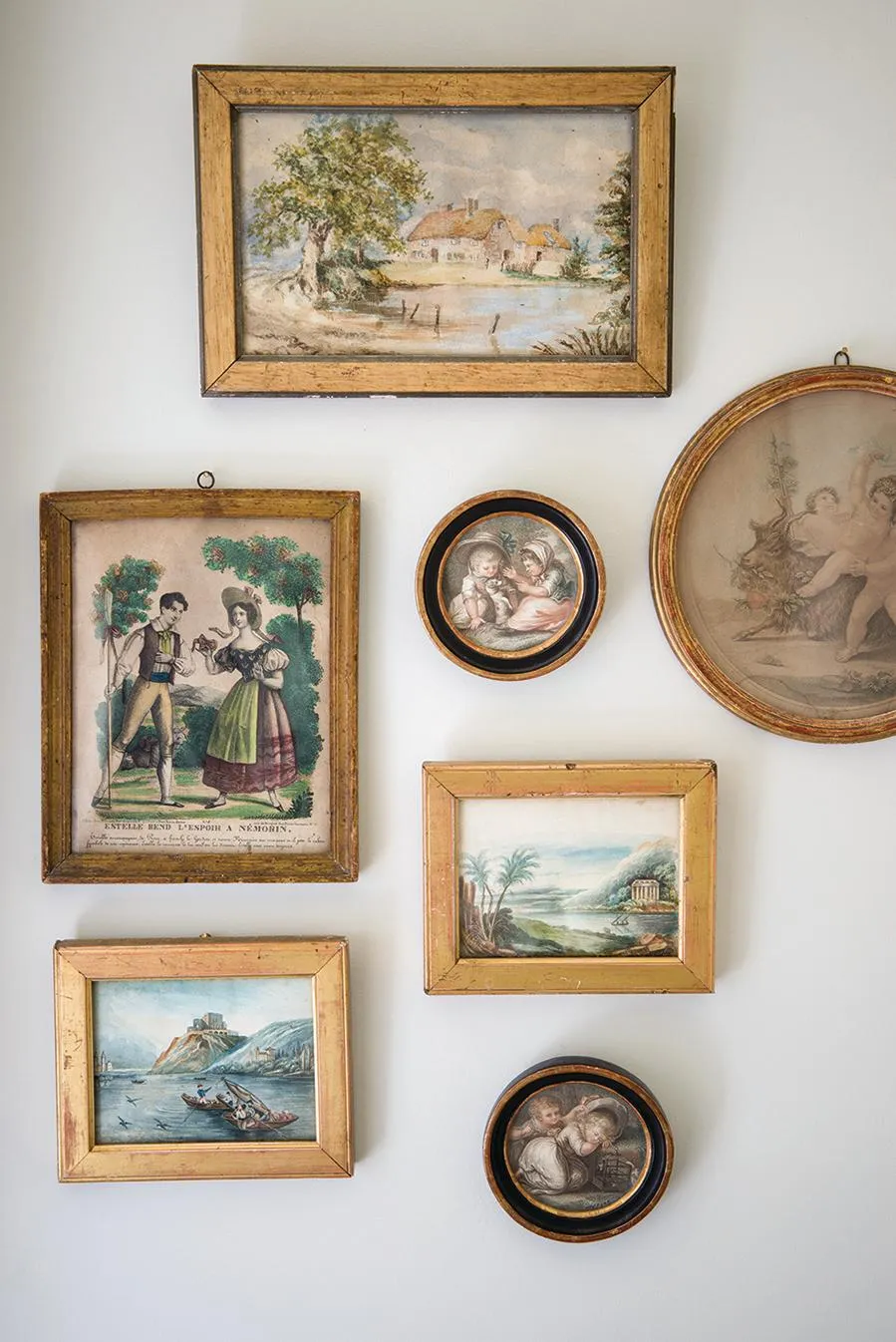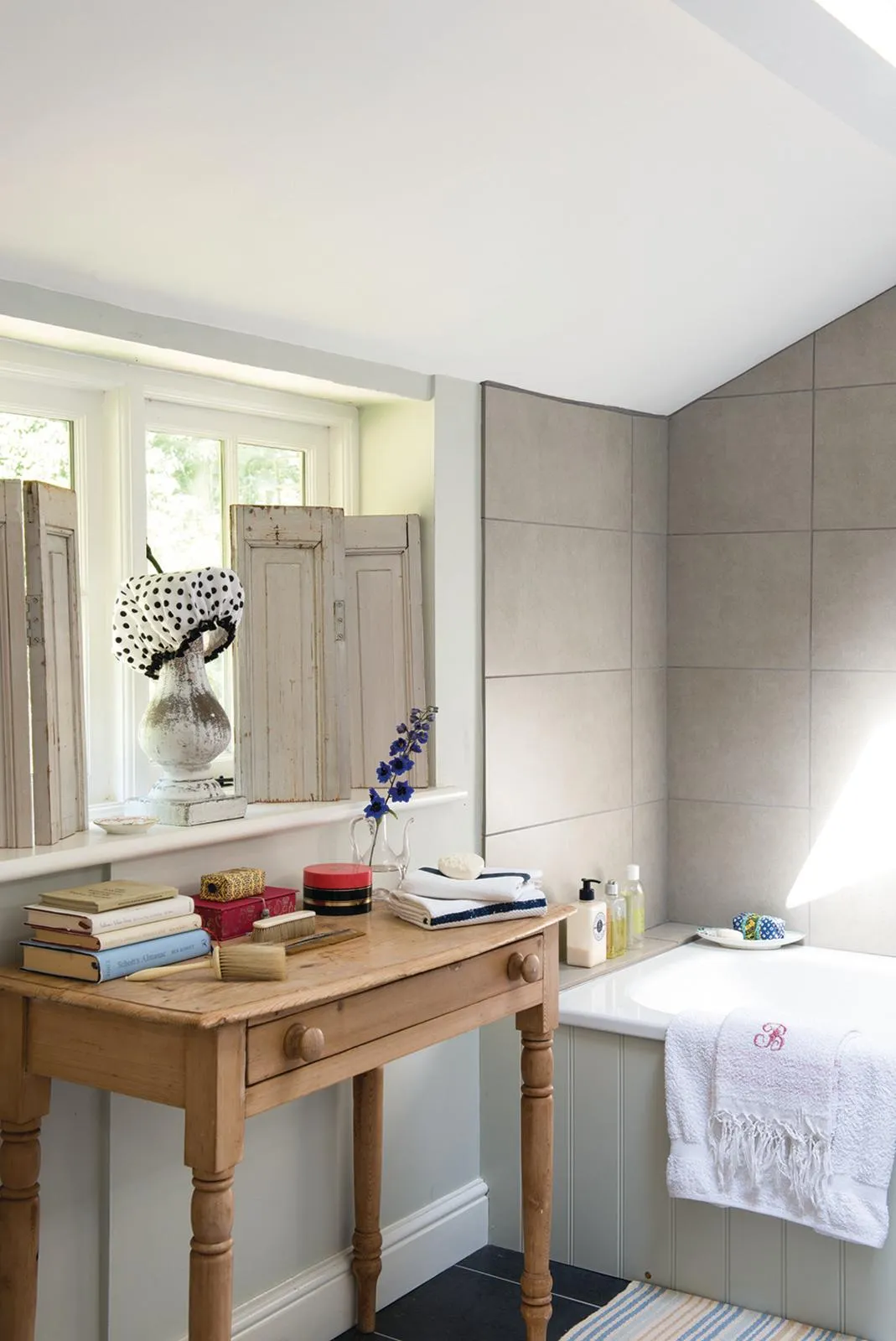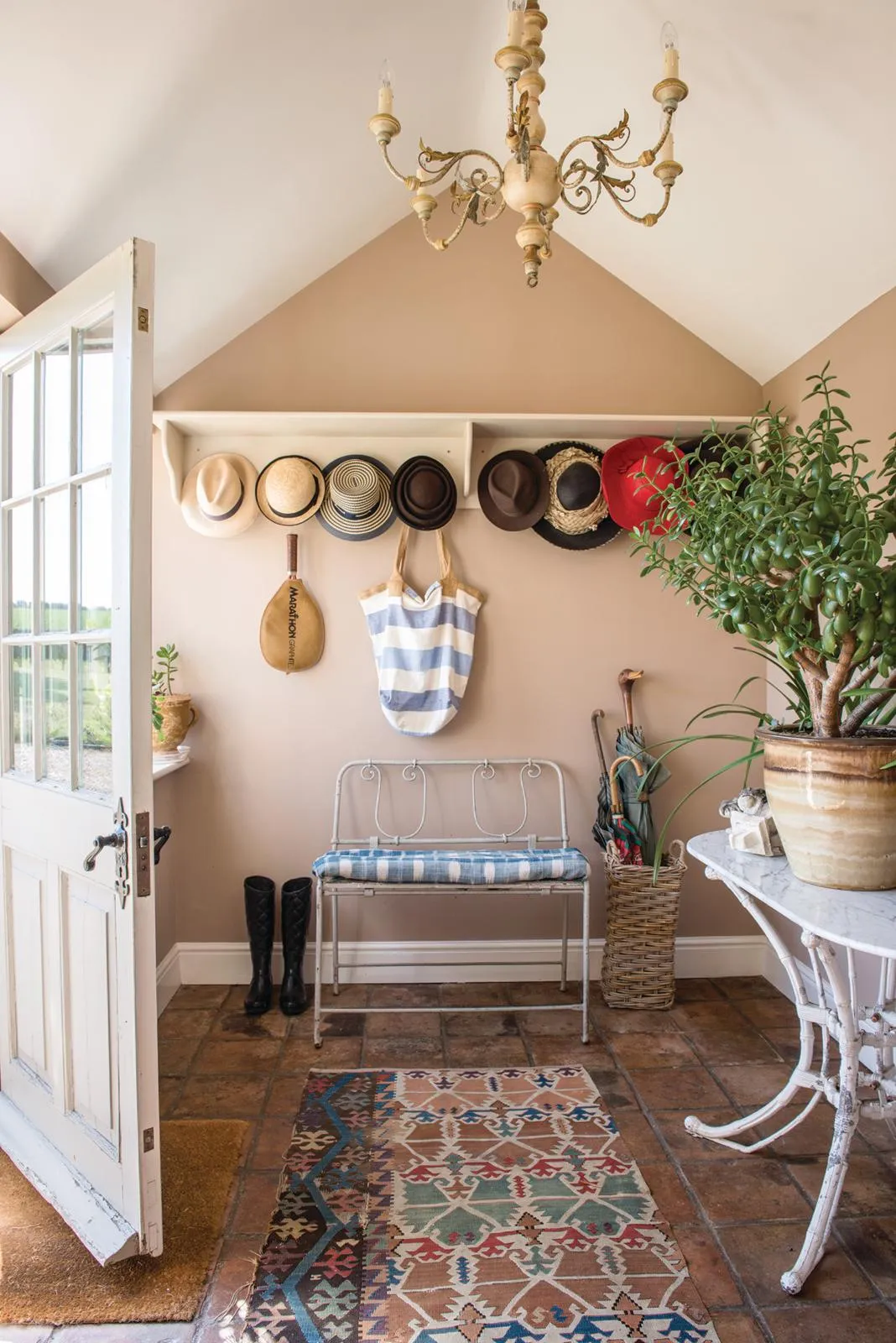Historic French textiles and furniture are the essential backdrop to any place that Nicole Fabre calls home. And if her delectable accent gives the impression she is a recent arrival on this side of the Channel, it does not tell the truth.
Nicole fell in love with England when she moved here as a student in the late 1960s, and has lived here ever since. She first came to the notice of interior designers and lovers of antique textiles when she opened a shop on the King’s Road, London in 1993. Here she sold the finest 18th-century French textiles to collectors and museums, and to textile companies who bought the designs in order to copy them.
At that stage, Nicole had no intention of printing her own collection, but that changed when people in the business assured her that with her knowledge of historic dyes and printing techniques, no one could do it better. Thus, Nicole Fabre Designs was born and allowed her to leave London and organise the business from Norfolk. Nicole was renting in 2012 when she set out to find a house that would be a better fit. It was not a matter of size or even style for her, but of location. It had to be quiet and close to nature.
The cottage she found exactly matched her brief. Down a track on the edge of a landed estate, Nicole describes her first viewing as a decisive moment, ‘I had to have it,’ she declares. ‘There is woodland across the track, an acre of land, two ponds, and I can play very loud classical music without disturbing anyone,’ she says. There was certainly nothing French about the architecture of the cottage to suggest an obvious match with Nicole’s antique furniture, or to anticipate how she might marry the two.
You might also like a colourful Cotswolds cottage
She had viewed the cottage when it was empty, was pleased with the layout but could see that her mainly 18th-century French furniture was not going to relate happily to the walls painted throughout in the then ubiquitous beige. She knew the right choice of wall colour was crucial to making these beloved antiques sit comfortably in an English cottage.
‘Although I am a classicist, I knew I had to set up a relationship with the more contemporary simplicity of the space, with its bare boarded floor. I didn’t want white walls so I chose a paint I thought would give a shade between French and Swedish grey, but it was too dark. So I worked with the painter to lighten it by degrees until we reached what we now know as Nicole’s Grey. It is a perfect backdrop for antique French furniture and fabrics, and I have used it on the walls of every room except the hall.’
Equal discipline was exercised in tackling the issue of how her important furniture would be positioned in these cottage rooms. ‘I drew a floor plan of the living area and cut out paper to match the size of each piece of furniture. Then I moved the furniture around on the plan and, when the day came to move in, I knew exactly where everything should go.’
Nicole entertains frequently and her plan also specified the purchase of an extendable dining table in a specific width to seat at least eight guests. She has another extension leaf stored for larger parties. Tablecloths are made to size in her own linens. ‘I set the table the English way, forks laid with tines pointing up, but this is considered impolite in France, so when I have French guests I have to turn the forks over!’
Table linen is stored in the Directoire chest at the junction of the L-shaped dining and sitting room. ‘It’s typically French to store table linen in the dining room,’ Nicole observes. And to bring the two elements closer together she has hung a tall gilded Louis Philippe mirror above the chest so that it reflects the table.
The British love affair with French style has always looked rather like one-way traffic, and never more than in types of seating, but Nicole’s introduction of well-cushioned sofas in the sitting room makes positive reference to the comfort associated with classic English style.
The international to and fro continues in the way the seating is arranged for conversation – a French tradition, with sofas positioned around three sides of a low table, which was converted from a Belgian cart once used for carrying kegs of beer. The sofas are upholstered in plain linens from Nicole’s original collection of fabrics vegetable-dyed in 18th-century colours, with cushions covered in ikats from the same era.
A television and music system, concealed in a 17th-century carved cabinet that belonged to her great-grandmother, overlooks a rug with a simple graphic design, completing the contemporary element in this room. When there is a larger contingent of guests for one of Nicole’s famous dinner parties, seating is increased using two pairs of armchairs that are otherwise stationed formally against the walls. ‘This is why I like fauteuils,’ Nicole adds, ‘because they can be moved around easily to facilitate conversation.’
You might also like an antiques-filled manor house in Loire
Textiles are essential for tying the look of Nicole’s home together. ‘The rooms need curtains in patterns that relate to the period furniture,’ Nicole explains. If not antique pieces, these are fabrics Nicole has printed from designs in her archive, knowing exactly the date and often the area of France where each was first created.
‘I use patterned linings,’ she adds, ‘so that when curtains are drawn, the outside looks as inviting as the inside. As I have my own fabrics, there’s the possibility to indulge.’ The only room without curtains or blinds is the bathroom but, like every room in the cottage, the bathroom is on the ground floor. The window looks out on to the track that runs past the cottage, so to give it privacy she has had the upper panels of a pair of French doors made into folding window shutters.
Some of the pieces with the most telling links to Nicole’s life in France are found in her bedroom. ‘I have had this Louis XVI painted cane bed since my teens and it has come with me everywhere,’ Nicole says. ‘And I sleep in antique bed linen, because I have a lot of it. My luxury is to have it starched and pressed for the quality of that moment when I settle into bed.’
When she wakes in the morning, she looks across the room to the collection of 18th and early 19th-century watercolours and prints grouped on the opposite wall, and also to the Provence secretaire with intriguing secret drawers, dating from around 1800. While her life may firmly be in England now, it doesn’t stop her heart meandering back to France at any given opportunity.
